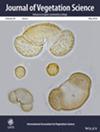A Novel Method for Monitoring Above- and Belowground Microclimates in Mountain Ecosystems Year-Round
Abstract
Aim
The role of microclimate in influencing range limits and vegetation shifts, especially in topographically heterogeneous mountain ecosystems, has gained attention in recent years. However, disturbance by large animals and snow pressure complicate reliable year-round time series of microclimatic measurements near the soil surface, calling for more robust logger setups.
Location
Swiss Alps.
Methods
We presented a novel, low-cost, and effective method to monitor above- and belowground microclimate in mountain environments year-round that withstands large animals and snow pressure and is suitable for remote areas. Specifically, we customized the widely used TOMST TMS-4 data loggers and tested their functionality and reliability in a factorial field experiment as well as in a regional-scale field study in heterogeneous mountain terrain.
Results
We found that standard TMS-4 loggers were frequently destroyed by snow creep or snow pressure over winter, but customized loggers remained intact. In addition, camera-trap footage demonstrated that only customized loggers were efficiently protected against large mammals, such as wolves, foxes, red deer, and chamois. The customization of loggers had ecologically negligible effects on the recorded above- and belowground microclimate.
Conclusions
With this method, we enable combined monitoring of air, surface, and soil temperatures as well as soil moisture in alpine environments throughout the year, and thus the collection of crucial microclimatic variables for research in mountain ecosystems.


 求助内容:
求助内容: 应助结果提醒方式:
应助结果提醒方式:


